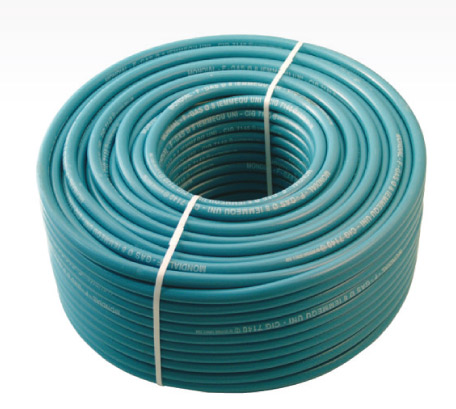Types, characteristics and production of PVC LPG pipes
What are the characteristics of PVC LPG pipes? Gnali Bocia produces different models, discover them all.

What is LPG?
LPG, an acronym for liquefied petroleum gas, indicates a mixture of low molecular weight hydrocarbons that are in the liquid state thanks to the modest compression required for the change of state which facilitates its transport and storage. It is an odorless gas that is odorized to make it recognizable and to prevent gas leaks at the olfactory level. The uses are many:- Domestic installations;
- Motor vehicles;
- Fuel (in certain areas away from pipelines).
What is PVC?
PVC, acronym for Polyvinyl chloride, is a polymer belonging to the commodities, that is the most popular polymers (in addition to polyethylene, polypropylene and polystyrene). It is a polymer used both in the industrial and textile sectors and can be added with plasticizers to improve the characteristics of ductility and toughness: hence the distinction between PVC-U (not plasticized) and PVC-P (plasticized).The characteristics of PVC pipes
LPG pipes are made of PVC to exploit the best characteristics of this material such as:
- Self-extinguishing ability: avoiding structural damage and the safety of people nearby;
- Resistance and toughness: allowing it to withstand loads and shocks that can otherwise damage the integrity of the pipe causing leaks and malfunctions;
- Poor air permeability: in this way the air and LPG can be separated, avoiding harmful and particularly risky mixtures.
Production of LPG pipes in PVC
The fundamental process for the production of PVC pipes for LPG is the extrusion that follows some basic steps:1. The material, in granules, is loaded inside the hopper;
2. The material is pushed by a special worm screw (as the process can release HCl which is highly harmful to the corrosion of the material) which, thanks to the action of resistances and the friction that is generated, melts the material;
3. The material is pushed inside a matrix that gives the desired shape to the material allowing the production of the pipes;
4. Subsequently, by means of processes such as drawing, the diameter and thickness are modified;
5. We proceed to the cut in the desired dimensions.
Through this process it is possible to obtain high quality products with shapes and geometries requested by the customer or by standards such as UNI 7140.
LPG pipes in PVC from the Gnali Bocia catalog
The PVC pipes for LPG present in the catalog are characterized by textile reinforcement which improves their structure, increasing the strength and durability of the components in operation. The operating temperatures range from -10 ° C to 60 ° C allowing an important thermal range. As far as standards and regulations are concerned, they are IMQ approved in compliance, as anticipated, with the UNI 7140 standard. As regards the supply, different lengths can be obtained, from 5 to 100 meters.15/03/2022
I contenuti di questo sito non hanno carattere di periodicità e non rappresentano 'prodotto editoriale'.








